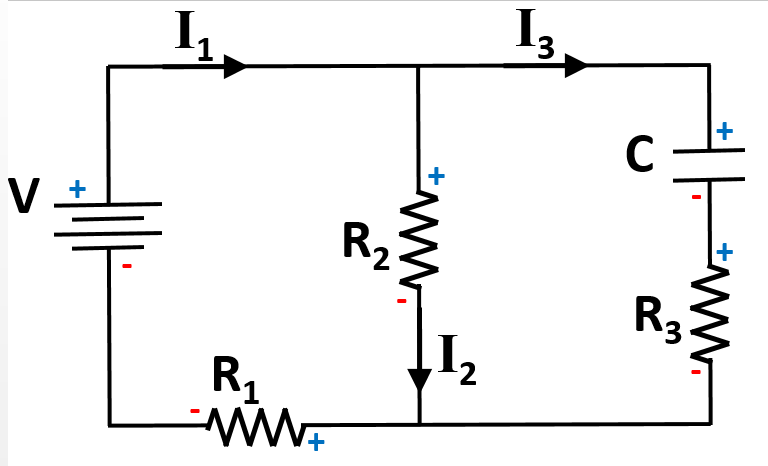All AP Physics C: Mechanics Resources
Example Questions
Example Question #1 : Resistors
A battery is measured to have a potential of 5V. When connected to a wire with no resistors or other components, the voltage measured is 4.9V.
Why was the potential of the battery measured differently when the wire was connected?
The wire has a slight internal resistance and caused a potential drop
Once the current is distributed across the wire, there is less charge per unit length of the circuit and so the voltage is lower
The wire connected to the battery must be connected to something else where this potential is being lost
The wire is causing electrons to be lost to the air, which lowers the potential measured
The difference in potential measured is small enough to be disregarded
The wire has a slight internal resistance and caused a potential drop
All wires have at least some internal resistance. The most likely explanation for this is that the wire is displaying slight resistance, and therefore caused the measured potential to be less than it was before.
Example Question #1 : Resistors
Three resistors and a battery form the following circuit.

Calculate the equivalent resistance if the resistors have the following values.
First, calculate the equivalent resistance of 

With resistors 2 and 3 combined together in a single value, the following circuit is formed.

Notice that and
are arranged in parallel. To calculate the equivalent resistance of this parallel pair, we use the following equation.
Plug in the values, and solve for 
This is just like the circuit shown below.

Example Question #11 : Electric Circuits
A lamp has a 

The formula for power is ,
Solve for the current, 
Example Question #65 : Electricity And Magnetism Exam
A particle accelerator with a radius of 500 meters can have up to 
How fast must the protons in the accelerator move in order to produce a current of 1A?
The current produced is the total charge that circulates the particle accelerator per unit time.
We calculate this by the equation:




Using the given current, we then solve for the velocity:
Example Question #1 : Circuit Relationships
Three resistors R1, R2, and R3 and the capacitor, C, are connected to an ideal battery V to complete the circuit as shown.

After the circuit has been connected for a very long time, the currents in each branch of the circuit are measured to be some values 



Which of the following equations is a correct expression regarding the voltage of the circuit after a long time?
Identifying the sum of the voltage drops and rises (Kirchoff's Loop Law) around the three possible loops of this circuit is the key to answering this question correctly. The following signs can be assigned to each of the circuit elements based on the direction of the currents given.

Use Ohm's law and the equation for capacitance to derive terms for the voltage across each element of the circuit.
There are three possible paths through the circuit, resulting in three correct equations that could be derived:
Only one of the given answer options matches up correctly to these.
Example Question #12 : Electric Circuits
A simple circuit consists of a resistor that's connected to a

One of the formulas for power is 
Using these values, we can solve for power.
Example Question #1 : Circuit Relationships
A cicuit with a voltage source of 40V has a 



What is the current supplied by the source?
The current supplied by the source can be calculated using a derivation of Ohm's law:
Start by finding the equivalent resistance of the circuit.
Sum the first two resistors in series:
Calculate the equivalent resistance of the two resistors in parallel:
Now, all of the reistances can be viewed as being in series.
Returning to our current calulation, we can find our final answer:
Example Question #1 : Circuit Relationships

What is the current delivered to the curcuit by the battery?
Using Ohm's law to solve for the value of the current from the battery requires calculation of the equivalent resistance of the circuit.
The resistors R2 and R3 are in parallel with one another. Once combined, their requivalent resistor (R23) is in series with R1.

The equivalent resistance is thus given by:
Use this value and the given voltage to solve for the current in the circuit:
Example Question #1 : Calculating Circuit Power
A straight copper wire has a fixed voltage applied across its length. Which of the following changes would increase the power dissipated by this wire?
Changing the material of the wire to a metal of greater resistivity
None of these options result in increased power dissipation
Decreasing the cross-sectional area of the wire
Increasing the temperature of the wire
Decreasing the length of the wire
Decreasing the length of the wire
Relevant equations:
Current and resistance are inversely proportional to one another, assuming voltage is fixed. Since 
To decrease resistance, we could:
1. Change the material of the wire to one of lesser resistivity
2. Decrease the length of the wire
3. Increase the cross-sectional area of the wire
4. Decrease the temperature of the wire (very slight effect on resistance)
Example Question #1 : Circuit Relationships
A simple circuit contains two 
The power supplied to the circuit can be calculated using the equation:
To use this equation, we need to find the equivalent resistance of the circuit. Use the equation for equivalent resistance in parallel:
Now that we have the resistance and the voltage, we can solve for the power.
All AP Physics C: Mechanics Resources

























































































